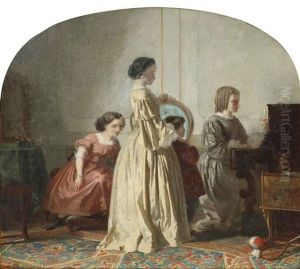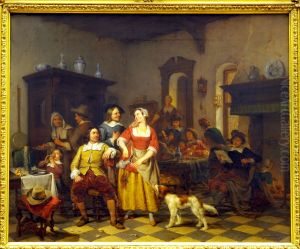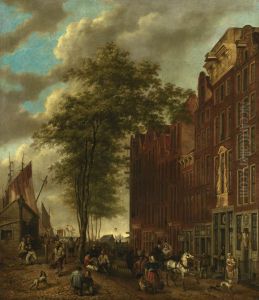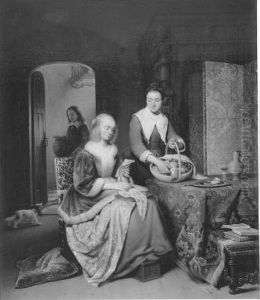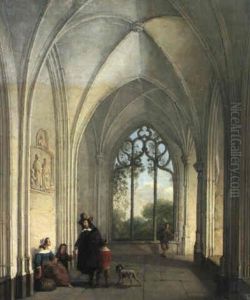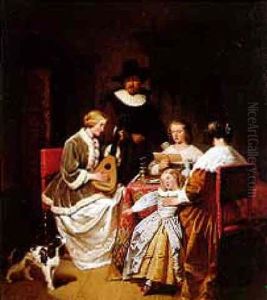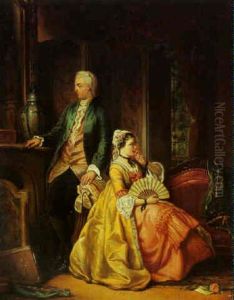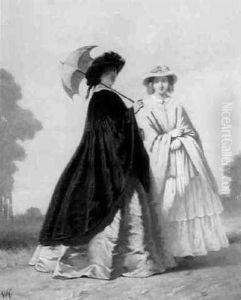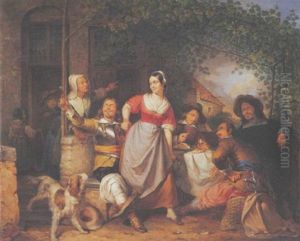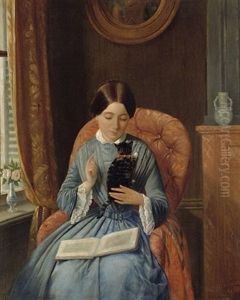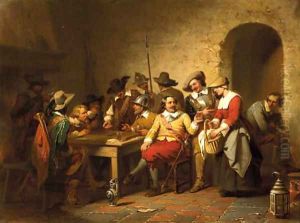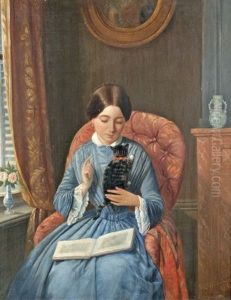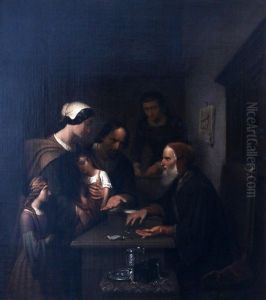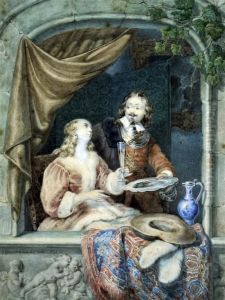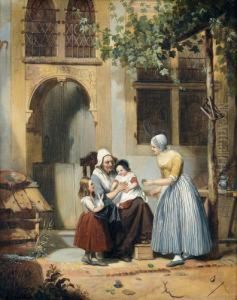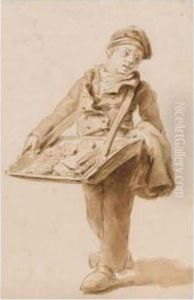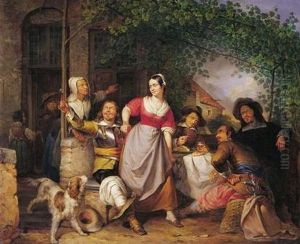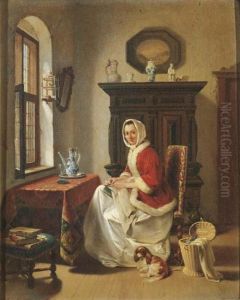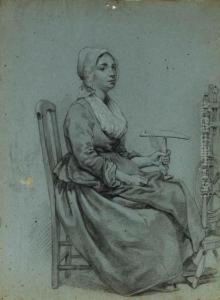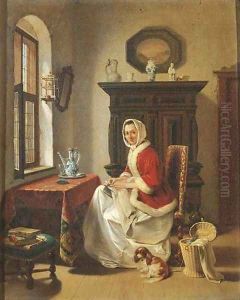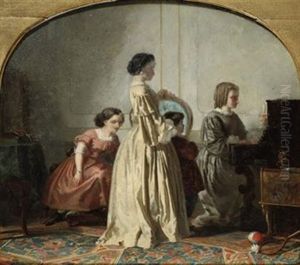Willem Pieter Hoevenaar Paintings
Willem Pieter Hoevenaar was a Dutch artist born on September 25, 1808, in Utrecht, Netherlands. He was part of a family of artists; his father, Cornelis Willem Hoevenaar, was also a painter, as was his brother, Cornelis Hoevenaar Jr., which suggests that he grew up in an environment that was conducive to nurturing his artistic talents. Not much is known about his early life and training, but it is clear that he developed his skills sufficiently to make a living as an artist.
Hoevenaar primarily worked as a painter, watercolorist, and draftsman. His subjects varied, but he seemed to favor scenes of everyday life, genre paintings, as well as landscapes and cityscapes. His style was in line with the Dutch Romantic tradition of the time, which often involved a meticulous approach to detail and a fondness for portraying the quaint and picturesque aspects of Dutch life and scenery.
During his career, Hoevenaar was active in his hometown of Utrecht, where he contributed to the local art scene. He was a member of various art societies, including 'Kunstliefde' (Love of Art), a society that still exists today. His works were exhibited and sold in the Netherlands, and like many of his contemporaries, he contributed to the cultural fabric of the Dutch Golden Age's long aftermath.
Willem Pieter Hoevenaar passed away on June 12, 1863, in Utrecht. His legacy lives on through his paintings, which continue to be of interest to collectors and historians of Dutch art. Although he may not be as widely known as some of the leading figures of Dutch painting, Hoevenaar's works are valuable for their depiction of 19th-century Dutch culture and their embodiment of the era's artistic sensibilities.
